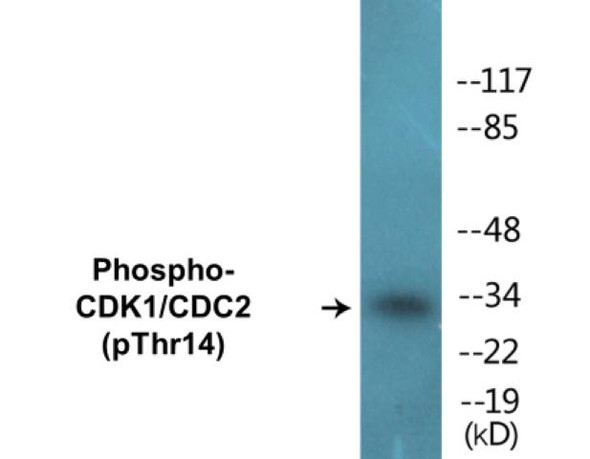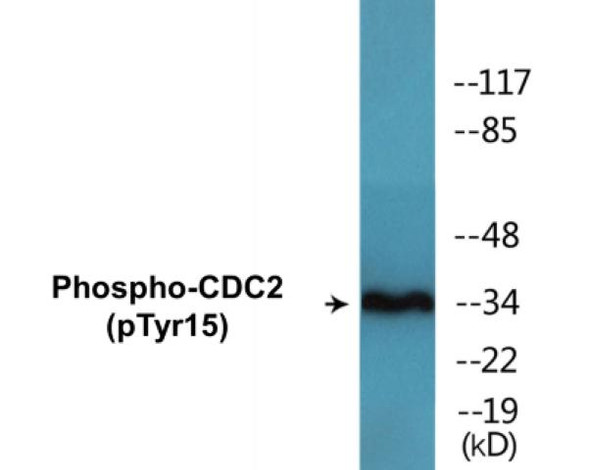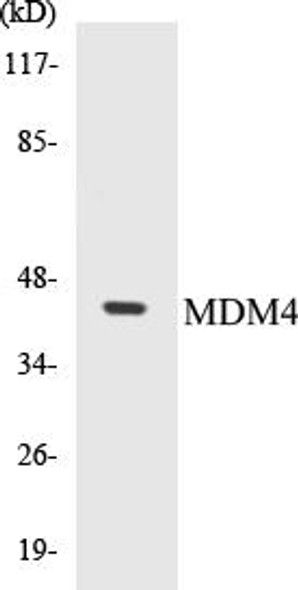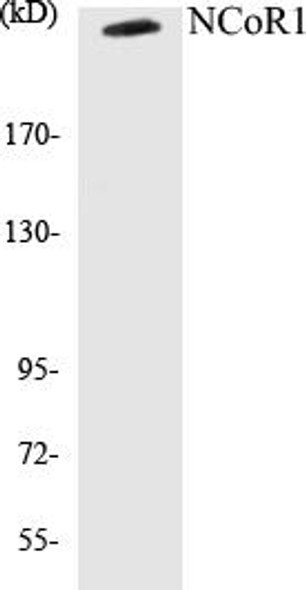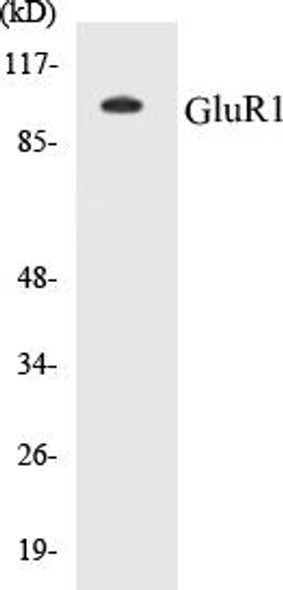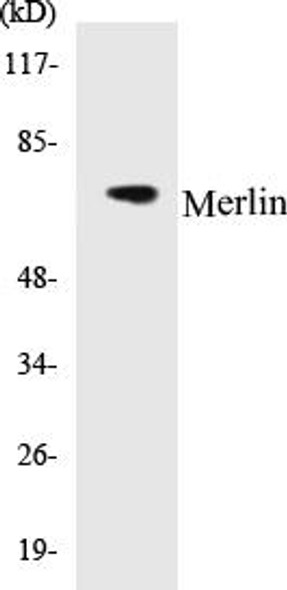CDK1/CDC2 Colorimetric Cell-Based ELISA Kit
- SKU:
- CBCAB00575
- Product Type:
- ELISA Kit
- ELISA Type:
- Cell Based
- Research Area:
- Cell Death
- Reactivity:
- Human
- Mouse
- Rat
- Detection Method:
- Colorimetric
Description
CDK1/CDC2 Colorimetric Cell-Based ELISA Kit
The CDK1/CDC2 Colorimetric Cell-Based ELISA Kit is an innovative tool for the precise measurement of CDK1/CDC2 protein levels in cell lysates. This kit offers superior sensitivity and specificity, ensuring accurate and consistent results for a variety of research applications.CDK1/CDC2 is a crucial regulator of cell cycle progression, playing a key role in cell division and proliferation. Dysregulation of CDK1/CDC2 has been linked to various diseases, including cancer and developmental disorders, making it a valuable target for further investigation and potential therapeutic interventions.
With its user-friendly protocol and reliable performance, the CDK1/CDC2 Colorimetric Cell-Based ELISA Kit is an essential tool for researchers in the fields of cell biology, cancer biology, and drug discovery. Stay ahead of the curve with this advanced kit, designed to meet your research needs with precision and efficiency.
| Product Name: | CDK1/CDC2 Colorimetric Cell-Based ELISA |
| Product Code: | CBCAB00575 |
| ELISA Type: | Cell-Based |
| Target: | CDK1 |
| Reactivity: | Human, Mouse, Rat |
| Dynamic Range: | > 5000 Cells |
| Detection Method: | Colorimetric 450 nmStorage/Stability:4°C/6 Months |
| Format: | 96-Well Microplate |
The CDK1/CDC2 Colorimetric Cell-Based ELISA Kit is a convenient, lysate-free, high throughput and sensitive assay kit that can detect CDK1/CDC2 protein expression profile in cells. The kit can be used for measuring the relative amounts of CDK1/CDC2 in cultured cells as well as screening for the effects that various treatments, inhibitors (ie siRNA or chemicals), or activators have on CDK1/CDC2.
Qualitative determination of CDK1/CDC2 concentration is achieved by an indirect ELISA format. In essence, CDK1/CDC2 is captured by CDK1/CDC2-specific primary antibodies while the HRP-conjugated secondary antibodies bind the Fc region of the primary antibody. Through this binding, the HRP enzyme conjugated to the secondary antibody can catalyze a colorimetric reaction upon substrate addition. Due to the qualitative nature of the Cell-Based ELISA, multiple normalization methods are needed:
| 1. | A monoclonal antibody specific for human GAPDH is included to serve as an internal positive control in normalizing the target absorbance values. |
| 2. | Following the colorimetric measurement of HRP activity via substrate addition, the Crystal Violet whole-cell staining method may be used to determine cell density. After staining, the results can be analysed by normalizing the absorbance values to cell amounts, by which the plating difference can be adjusted. |
| Database Information: | Gene ID: 1017, UniProt ID: P06493/P24941/Q00526, OMIM: 116953, Unigene: Hs.19192/Hs.689624 |
| Gene Symbol: | CDK1/CDK2/CDK3 |
| Sub Type: | None |
| UniProt Protein Function: | CDK1: a protein kinase of the CDK family. Catalytic subunit of the conserved protein complex known as M-phase promoting factor (MPF), which is essential for G1/S and G2/M phase transitions. Mitotic cyclins stably associate with this protein and function as regulatory subunits. Its activity is controlled by cyclin availability and phosphorylation through the cell cycle. Activated in many cancers including colon, liver and breast. The T isoform, which lacks a regulatory region, is expressed in breast cancer. Inhibition in cancer cells may drive cells into apoptosis. May also drive cell migration. Inhibitors: BMS-265246, BMS-265246-01. 2 isoforms of the human protein are produced by alternative splicing. |
| UniProt Protein Details: | Protein type:Cell cycle regulation; EC 2.7.11.23; EC 2.7.11.22; Motility/polarity/chemotaxis; Kinase, protein; Protein kinase, CMGC; Protein kinase, Ser/Thr (non-receptor); CMGC group; CDK family; CDK/CDK1 subfamily; CDK1 subfamily Chromosomal Location of Human Ortholog: 10q21.1 Cellular Component: nucleoplasm; centrosome; membrane; mitochondrion; spindle microtubule; cytoplasm; midbody; nucleus; cytosol Molecular Function:RNA polymerase subunit kinase activity; protein serine/threonine kinase activity; protein binding; cyclin binding; cyclin-dependent protein kinase activity; histone kinase activity; Hsp70 protein binding; ATP binding; protein kinase activity Biological Process: regulation of Schwann cell differentiation; activation of MAPKK activity; nerve growth factor receptor signaling pathway; activation of MAPK activity; histone phosphorylation; response to toxin; ventricular cardiac muscle cell development; regulation of embryonic development; centrosome cycle; stress-activated MAPK cascade; toll-like receptor 3 signaling pathway; response to organic cyclic substance; toll-like receptor 5 signaling pathway; small GTPase mediated signal transduction; protein complex assembly; G2/M transition of mitotic cell cycle; toll-like receptor 4 signaling pathway; positive regulation of cardiac muscle cell proliferation; response to drug; mitosis; organ regeneration; fibroblast growth factor receptor signaling pathway; positive regulation of protein import into nucleus, translocation; cell aging; pronuclear fusion; toll-like receptor 2 signaling pathway; chromosome condensation; response to ethanol; cell division; response to activity; toll-like receptor 9 signaling pathway; response to amine stimulus; G1/S transition of mitotic cell cycle; negative regulation of apoptosis; positive regulation of ubiquitin-protein ligase activity during mitotic cell cycle; axon guidance; apoptosis; mitotic nuclear envelope disassembly; positive regulation of mitotic cell cycle; toll-like receptor 10 signaling pathway; epithelial cell differentiation; anaphase-promoting complex-dependent proteasomal ubiquitin-dependent protein catabolic process; response to axon injury; DNA replication; epidermal growth factor receptor signaling pathway; cell migration; MyD88-independent toll-like receptor signaling pathway; organelle organization and biogenesis; MAPKKK cascade; peptidyl-threonine phosphorylation; microtubule cytoskeleton organization and biogenesis; DNA repair; MyD88-dependent toll-like receptor signaling pathway; G1/S-specific transcription in mitotic cell cycle; peptidyl-serine phosphorylation; response to cadmium ion; regulation of ubiquitin-protein ligase activity during mitotic cell cycle; response to copper ion; mitotic cell cycle G2/M transition DNA damage checkpoint; Ras protein signal transduction; insulin receptor signaling pathway; toll-like receptor signaling pathway; innate immune response; mitotic cell cycle; vascular endothelial growth factor receptor signaling pathway; positive regulation of DNA replication |
| NCBI Summary: | The protein encoded by this gene is a member of the Ser/Thr protein kinase family. This protein is a catalytic subunit of the highly conserved protein kinase complex known as M-phase promoting factor (MPF), which is essential for G1/S and G2/M phase transitions of eukaryotic cell cycle. Mitotic cyclins stably associate with this protein and function as regulatory subunits. The kinase activity of this protein is controlled by cyclin accumulation and destruction through the cell cycle. The phosphorylation and dephosphorylation of this protein also play important regulatory roles in cell cycle control. Alternatively spliced transcript variants encoding different isoforms have been found for this gene. [provided by RefSeq, Mar 2009] |
| UniProt Code: | P06493 |
| NCBI GenInfo Identifier: | 334302921 |
| NCBI Gene ID: | 983 |
| NCBI Accession: | P06493.3 |
| UniProt Secondary Accession: | P06493,O60764, A8K7C4, C9J497, |
| UniProt Related Accession: | P06493 |
| Molecular Weight: | 297 |
| NCBI Full Name: | Cyclin-dependent kinase 1 |
| NCBI Synonym Full Names: | cyclin-dependent kinase 1 |
| NCBI Official Symbol: | CDK1 |
| NCBI Official Synonym Symbols: | CDC2; CDC28A; P34CDC2 |
| NCBI Protein Information: | cyclin-dependent kinase 1; p34 protein kinase; cell cycle controller CDC2; cell division protein kinase 1; cell division control protein 2 homolog; cell division cycle 2, G1 to S and G2 to M |
| UniProt Protein Name: | Cyclin-dependent kinase 1 |
| UniProt Synonym Protein Names: | Cell division control protein 2 homolog; Cell division protein kinase 1; p34 protein kinase |
| UniProt Gene Name: | CDK1 |
| UniProt Entry Name: | CDK1_HUMAN |
| Component | Quantity |
| 96-Well Cell Culture Clear-Bottom Microplate | 2 plates |
| 10X TBS | 24 mL |
| Quenching Buffer | 24 mL |
| Blocking Buffer | 50 mL |
| 15X Wash Buffer | 50 mL |
| Primary Antibody Diluent | 12 mL |
| 100x Anti-Phospho Target Antibody | 60 µL |
| 100x Anti-Target Antibody | 60 µL |
| Anti-GAPDH Antibody | 60 µL |
| HRP-Conjugated Anti-Rabbit IgG Antibody | 12 mL |
| HRP-Conjugated Anti-Mouse IgG Antibody | 12 mL |
| SDS Solution | 12 mL |
| Stop Solution | 24 mL |
| Ready-to-Use Substrate | 12 mL |
| Crystal Violet Solution | 12 mL |
| Adhesive Plate Seals | 2 seals |
The following materials and/or equipment are NOT provided in this kit but are necessary to successfully conduct the experiment:
- Microplate reader able to measure absorbance at 450 nm and/or 595 nm for Crystal Violet Cell Staining (Optional)
- Micropipettes with capability of measuring volumes ranging from 1 µL to 1 ml
- 37% formaldehyde (Sigma Cat# F-8775) or formaldehyde from other sources
- Squirt bottle, manifold dispenser, multichannel pipette reservoir or automated microplate washer
- Graph paper or computer software capable of generating or displaying logarithmic functions
- Absorbent papers or vacuum aspirator
- Test tubes or microfuge tubes capable of storing ≥1 ml
- Poly-L-Lysine (Sigma Cat# P4832 for suspension cells)
- Orbital shaker (optional)
- Deionized or sterile water
*Note: Protocols are specific to each batch/lot. For the correct instructions please follow the protocol included in your kit.
| Step | Procedure |
| 1. | Seed 200 µL of 20,000 adherent cells in culture medium in each well of a 96-well plate. The plates included in the kit are sterile and treated for cell culture. For suspension cells and loosely attached cells, coat the plates with 100 µL of 10 µg/ml Poly-L-Lysine (not included) to each well of a 96-well plate for 30 minutes at 37°C prior to adding cells. |
| 2. | Incubate the cells for overnight at 37°C, 5% CO2. |
| 3. | Treat the cells as desired. |
| 4. | Remove the cell culture medium and rinse with 200 µL of 1x TBS, twice. |
| 5. | Fix the cells by incubating with 100 µL of Fixing Solution for 20 minutes at room temperature. The 4% formaldehyde is used for adherent cells and 8% formaldehyde is used for suspension cells and loosely attached cells. |
| 6. | Remove the Fixing Solution and wash the plate 3 times with 200 µL 1x Wash Buffer for five minutes each time with gentle shaking on the orbital shaker. The plate can be stored at 4°C for a week. |
| 7. | Add 100 µL of Quenching Buffer and incubate for 20 minutes at room temperature. |
| 8. | Wash the plate 3 times with 1x Wash Buffer for 5 minutes each time. |
| 9. | Add 200 µL of Blocking Buffer and incubate for 1 hour at room temperature. |
| 10. | Wash 3 times with 200 µL of 1x Wash Buffer for 5 minutes each time. |
| 11. | Add 50 µL of 1x primary antibodies (Anti-CDK1/CDC2 Antibody and/or Anti-GAPDH Antibody) to the corresponding wells, cover with Parafilm and incubate for 16 hours (overnight) at 4°C. If the target expression is known to be high, incubate for 2 hours at room temperature. |
| 12. | Wash 3 times with 200 µL of 1x Wash Buffer for 5 minutes each time. |
| 13. | Add 50 µL of 1x secondary antibodies (HRP-Conjugated AntiRabbit IgG Antibody or HRP-Conjugated Anti-Mouse IgG Antibody) to corresponding wells and incubate for 1.5 hours at room temperature. |
| 14. | Wash 3 times with 200 µL of 1x Wash Buffer for 5 minutes each time. |
| 15. | Add 50 µL of Ready-to-Use Substrate to each well and incubate for 30 minutes at room temperature in the dark. |
| 16. | Add 50 µL of Stop Solution to each well and read OD at 450 nm immediately using the microplate reader. |
(Additional Crystal Violet staining may be performed if desired – details of this may be found in the kit technical manual.)


